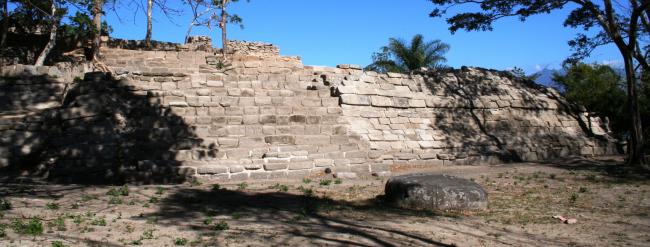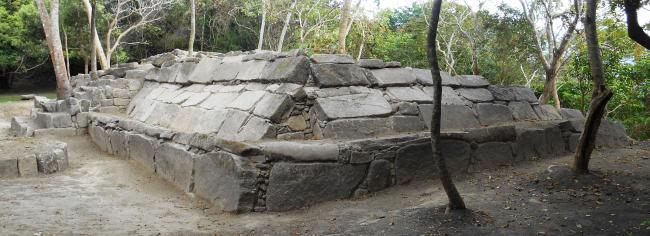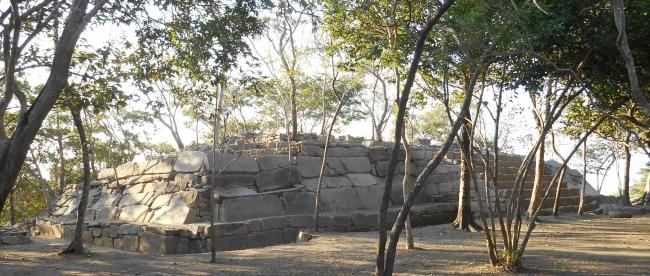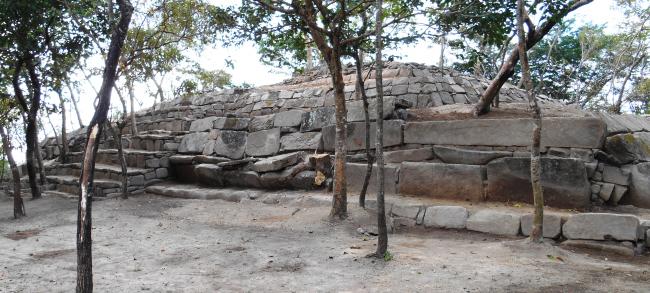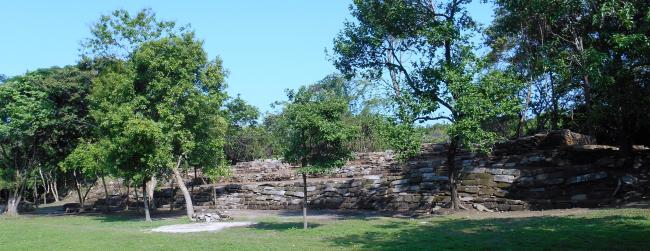
Grupo C
Estructura
The group has three plazas, is located to the south of Group B and is connected to it by ramps distributed on the slopes of the terrain. In the first plaza is located structure C-3, with Altar 1, and the smaller structures C-4, C-5 and C-6. In the middle plaza is located structure C-10 and, to the south, a large ramp leads to a huge rectangular plaza 100 meters long by 50 meters wide, surrounded by structures C-11, C-12, C-13 and C-14. Structures C-11, C-12 and C-14 have not yet been excavated.
Structure C-3. Temple of Ceiba: The left part of the basement was collapsed by the generations of the ceiba in many years and currently grows a ceiba as a great-granddaughter or great-great-granddaughter. In front of C-3 is Altar 1 which represents a fantastic animal with three human faces. Therefore, the locals also call it “Tres Caras” (Three Faces) and possibly the prototype was a turtle.
Structure C-11. Mocho Building: This structure lost the back part, since it was built on a fragile filling and only the main façade and both incomplete sides are preserved.
Structure C-12: It has a stairway formed with large or megalithic stones, to the northeast there is a stela box where Altar 2 and Stela 4 are located, as well as 4 more smooth stelae found in the exploration.
Structure C-13. Mirador: It is located at the south end of the Plaza de la Piedra de Sacrificio. From this place, a panoramic view of the city of Tonalá can be appreciated. Behind this structure, there is a space called “Flintstones Room” for visitors to rest.
Structure C-14. Palace of eight columns: It is the longest sculpture of the archaeological zone with 54 m long and C-14a and C-14b are located at both ends, so in sum more than 100 m long.


